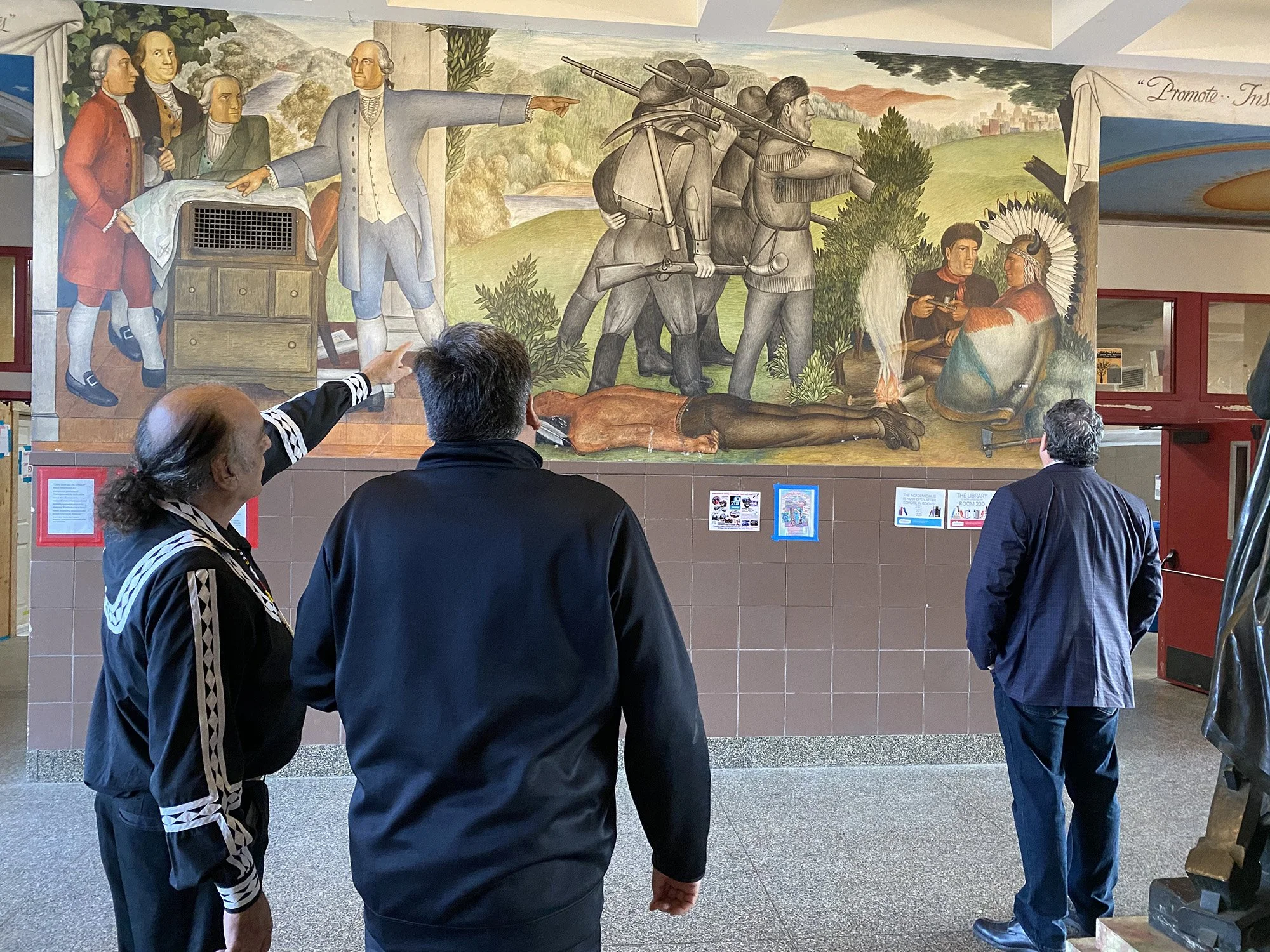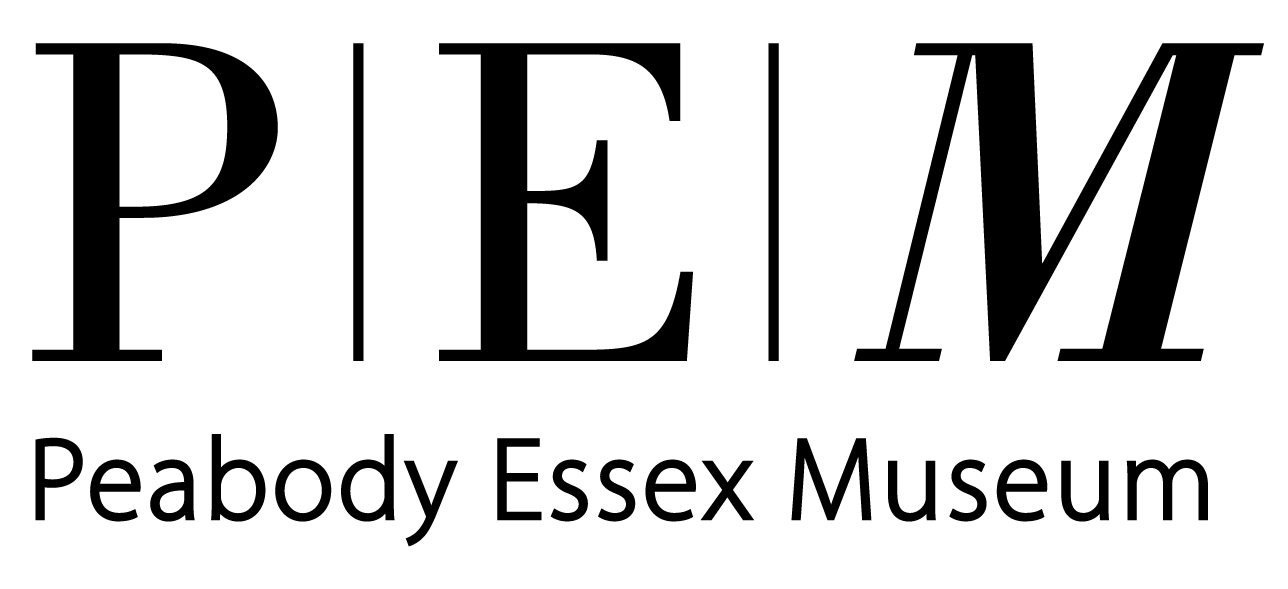TOWN DESTROYER explores the ways we look at art and history at a time of racial reckoning. The story focuses on a dispute over historic murals depicting the life of George Washington: slave owner, general, land speculator, President, and a man Seneca leaders called “Town Destroyer” after he ordered their villages destroyed during the Revolutionary War.
The murals at San Francisco’s George Washington High School, painted in 1936 by leftwing artist Victor Arnautoff, a student of Diego Rivera, ignite controversy in the Bay area in the wake of battles over Confederate monuments across the United States. Heated debates spill into the community and make national headlines, as the murals become a catalyst for a national discussion about censorship, reparations, generational trauma, the ways in which America’s history of genocide and slavery is taught and memorialized, and the differences between monuments built to further white supremacy and art that critiques racism.
How should a changing society deal with controversial works of art? Do the intentions of the artist matter? or just the impact on viewers? Is it censorship to destroy murals that show painful histories? What does our country owe people who have been historically wronged?
Salem Film Fest is happy to be collaborating with Marblehead High School on some of this year’s Blog Posts and we are grateful to MHS Teacher Connor Ryan who has been working with his students in exploring this year’s festival.
TOWN DESTROYER Co-Directors Deborah Kaufman and Alan Snitow
MHS: You two have been working together for a long time. Could you please tell us about the nature and trajectory of your partnership?
Deborah Kaufman: We’ve been making films together since the mid-1990’s, starting with our film BLACKS AND JEWS. Neither of us went to film school but we were connected to the vibrant Bay Area film community through our prior work in media (Alan in radio as a radio news director and TV news producer; Deborah as Founding Director of the Jewish Film Festival). We had the benefit of collaborating with amazingly talented, smart and creative filmmakers here - who often help each other and work on each other’s films - which really jump-started our 2nd career. We both act as Producers and as Directors on every film, and work closely with our editors during post-production, which is often where the films actually come together.
MHS: How did you find this project?
Alan Snitow: We always have a hard time remembering exactly how we get into projects. That may be because making a documentary is a long-term effort, and so to consider doing something so crazy as that, it has to be over-determined with lots of reasons and inspirations flowing together to make it possible (and hopefully sometimes funding too). In this case, the debate over the murals had hit the local papers, and the San Francisco School Board was going to hold a public hearing about the issue. So we decided on short notice that we would take my visiting cousins with us and film the event. The debate was passionate, and we thought the art presented a much more interesting and complicated case study than the completely racist monuments to segregation and the Confederacy that have been discussed a lot in the media. We like that kind of complexity since it allows us to dig into the subject and present multiple points of view.
MHS: How long did filming take?
DK: This film began in the summer of 2019 and was completed in the summer of 2022. Three years is about how long it takes us to make most of our films - with probably half the time spent in research, pre-production and fundraising, and the other half in shooting and editing the film. Most of the filming was done here in the Bay Area where the story takes place, but we also took short trips to the Sierra foothills/Gold Country, Los Angeles, and Washington DC for interviews and to follow our characters.
It was hard to make a film during the height of the Covid pandemic - being stuck at home in the beginning and waiting for the vaccine, venturing onto airplanes, following Covid filming protocols, etc. Then there was the challenge of transcending the ‘he said/she said’ aspect of the film - wanting to ‘break the binary’ and suggest a new way of approaching the dispute over the murals. We like to think of our films as ‘interventions’ - opening possibilities, making things more complex and interesting for our audiences. We want to challenge ourselves, too, in the process. Talking with so many people who had varying opinions was wonderful in that respect.
MHS: Please describe some of the highlights of making this film: is there an interview or scene -- or even a shot -- that you're particularly proud of?
AS: We had a good time making this film cause the people we were talking to were fascinating and real personalities, so it’s hard to choose. I think that the scene with artist Dewey Crumpler going back into George Washington High School to look at his 45 year old murals was wonderful. We spent several months trying to get into the school to film the murals with him, and the school district turned us down, but the principal said yes, and we agreed to film using only our cellphones. So that scene was very spontaneous. We’re also very proud of the scene with curator Paul Chaat Smith at the National Museum of the American Indian. Paul doesn’t like being interviewed very much so we had to convince him, which we did because we love his written work and his dry sense of humor. And of course for us, we are very gratified that Dewey and Paul—who trusted us—in the end really like the film.
MHS: Would you like to tell us about any new projects you’re working on?
AS: A lot of what you do in editing documentaries is eliminating from the film many of the things you really want to put in, but just won’t fit. One of the things we couldn’t put in was the wonderful art that Dewey Crumpler has been making since the George Washington High response mural back in the mid-1970’s. So, we’ve decided to try to make a short film about Dewey’s more recent work, which is very different from his mural work—much more abstract, but also very focused on wide swathes of history—particularly about the history of global trade from the slave trade to the current globalized system of trade in commodities.
MHS: What do you want your audience to take away from this film?
DK: We want people to understand the imperative of what Robin Kelley talks about at the end of the film: that there is no one story, that each of our stories is incomplete, that we need to listen to each other and not keep screaming at one another. The film raises some big questions about the goal of education (to provide safety and security or to provoke and empower?), the break-up of political alliances, the meanings and uses of terms like victimhood and trauma, and the purpose and role in society of controversial art, which will always be with us. We hope that people are able to think more deeply about these things after they see the film.
TOWN DESTROYER screens in-person at the Peabody Essex Museum on Friday, March 24 at 5:30pm followed by a Zoom Q&A with Co-Directors Deborah Kaufman and Alan Snitow - tickets available here.
The film is also available for streaming during the virtual portion of the festival, March 27 - April 2 - tickets available here.





